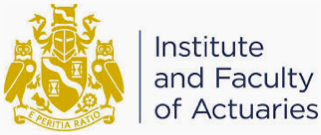
The main aim of the MAEG (Mathematics Applied to Economics and Management) degree is to combine a basic education in Economics and Management with a solid education in Mathematics.
This degree prepares professionals capable of equating and efficiently solving problems in the field of Economics and Management, using mathematical instruments and the most modern computational means.
All the mathematical tools to be able to formalize and respond to the great challenges of the economy and companies.
Doing what companies are looking for so much: “business translation”. You will have the most solid knowledge, knowing how to apply it to concrete situations.
Solving problems.
Programming! And continue to learn!
What areas do you want to specialize in in the future, whether in a master's degree, in a company, or in a research career.



The Degree in Mathematics Applied to Economics and Management by ISEG prepares its students to respond effectively and efficiently to the demands and challenges of the national and international job market.
The successful and rapid integration of MAEG graduates into the labor market – no one is known to be unemployed – is a clear sign that this is a course that responds particularly well to the needs of the market in a wide range of sectors: banks, insurance companies and other financial institutions, consulting firms and public bodies, universities and other research institutions.
The degree in MAEG also opens up excellent perspectives for continuing studies at the 2nd cycle level in areas such as Actuarial Sciences, Economic Decision, Econometrics, Monetary and Financial Economics, Management, Finance or Financial Mathematics.
| Year 1 | Semester |
|---|---|
| Linear algebra | 1 |
| Mathematical Analysis I | 1 |
| Microeconomics I * | 1 |
| Statistics Laboratory | 1 |
| Management principles | 1 |
| Mathematical Analysis II | 2 |
| Economic and Business History | 2 |
| Macroeconomics I * | 2 |
| Mathematical Programming I | 2 |
| Programming languages | 2 |
| year 2 | Semester |
|---|---|
| Mathematical Analysis III | 1 |
| Macroeconomics I * | 1 |
| Microeconomics I * | 1 |
| odds | 1 |
| Mathematical Programming II | 1 |
| Complex Analysis and Differential Equations | 2 |
| Statistic | 2 |
| Operational Research Topics | 2 |
| Mathematical Finance | 2 |
| Microeconomics II | 2 |
| Year 3 | Semester |
|---|---|
| General Accounting I | 1 |
| Econometrics I | 1 |
| Stochastic Processes and Applications | 1 |
| 2 or 3 Electives | 1 |
| Data Science and Forecasting | 2 |
| Numerical analysis | 2 |
| Analytical accounting | 2 |
| Econometrics II | 2 |
| 1 or 2 Optional | 2 |
* From the 2025/2026 academic year, the curricular units Microeconomics I and Macroeconomics I become part of the 1st year of the course, instead of the previous UC Economics I and Economics II. However, during the transition school year (2025/26),Microeconomics I and Macroeconomics I are still taught at 2nd year for students who entered in 2024/25 or before.
Applications for all degrees at ISEG are made online.
Minimum application score 100 points with the following weightings:
entrance exams
| students from | 1st year | 2nd year | 3rd year |
| Students within the EU | € 697 | € 697 | € 697 |
| Students outside the EU (International) | € 7,500 | € 7,500 | € 7,500 |
We believe that financial restrictions should not impede access to higher education and that is why we seek to provide equal opportunities for all.
If you are not an EU, EEA or Swiss citizen then you will need a Student Visa.
Once you have decided to join the degree and paid the 1st installment of tuition fees to guarantee your place, you can issue the letter of acceptance on the FENIX Portal. This document will be required later on to apply for a Student Visa.
The student visa must be requested at the nearest Embassy or at a Portuguese consular post in the country of origin.













